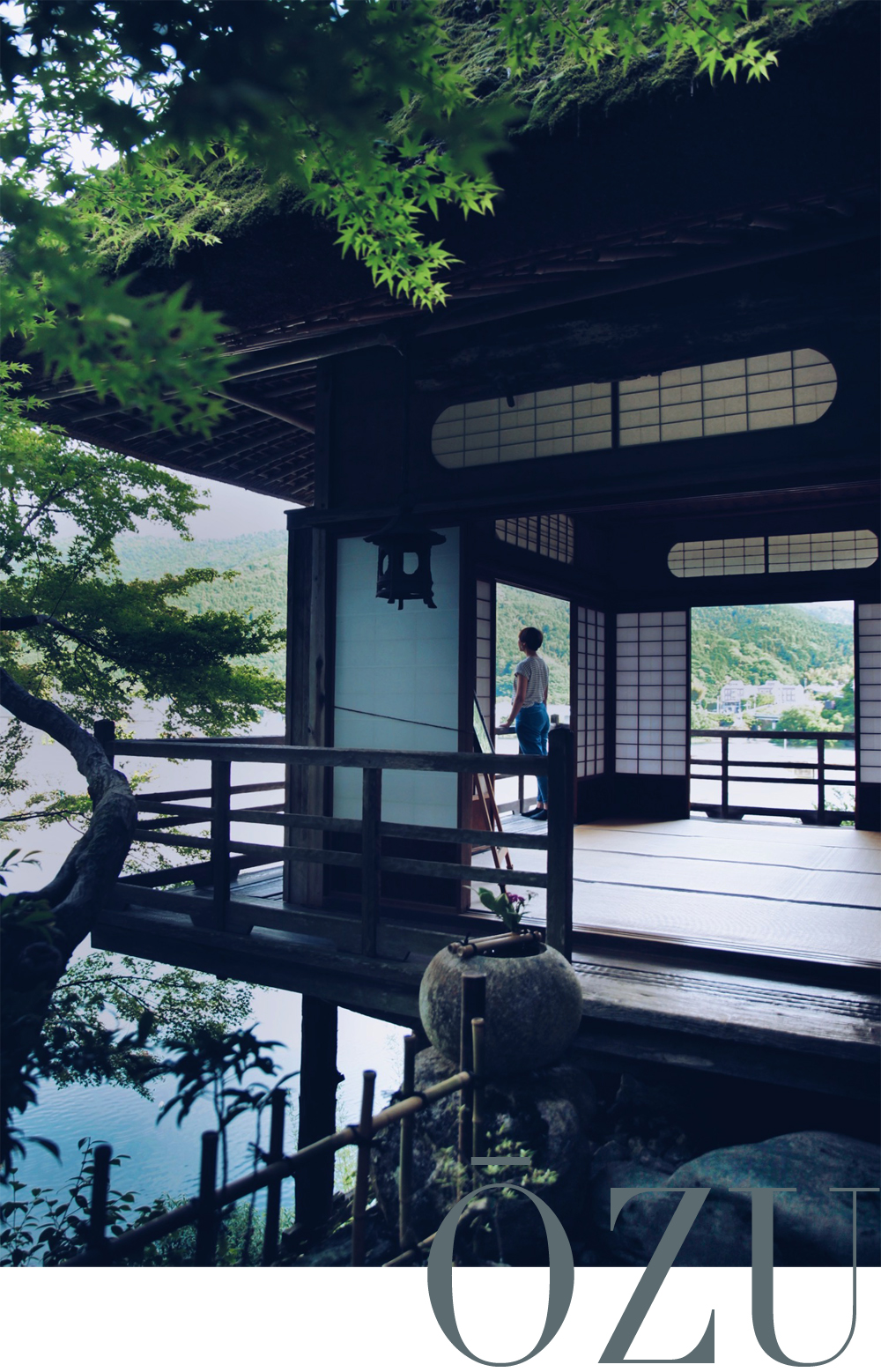
Let’s go back to our Japanese road-trip which is more than a year old. This trip seems so far away now… as if it was lost in another dimension! I’m holding the good end to finish telling you everything but as I don’t think I’ll be going back to Japan anytime soon, this gives me an excuse to continue traveling with you by proxy.
Today’s stopover is the small town of Ōzu in Ehime prefecture. We did a day-trip and fell under the charm of this unknown city. More beautiful discoveries!
Go to Ōzu
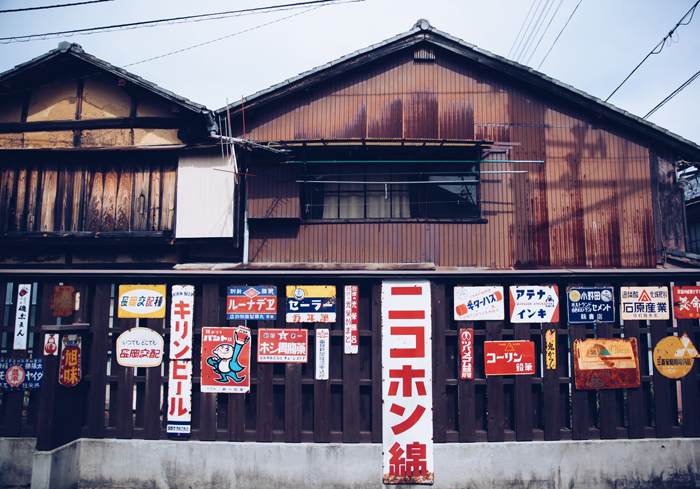
If you followed our previous stop, you know that we were in Matsuyama and that we stayed there 3 days (2 nights). During this short period of time, however, we chose to go to Ōzu for one day knowing that the car ride is only about 50 minutes.
This would certainly not have been possible if we hadn’t rented a car (or else, we would have had to keep an eye on our watch all the time to not miss the train and manage the possible buses while here, we had a total freedom).
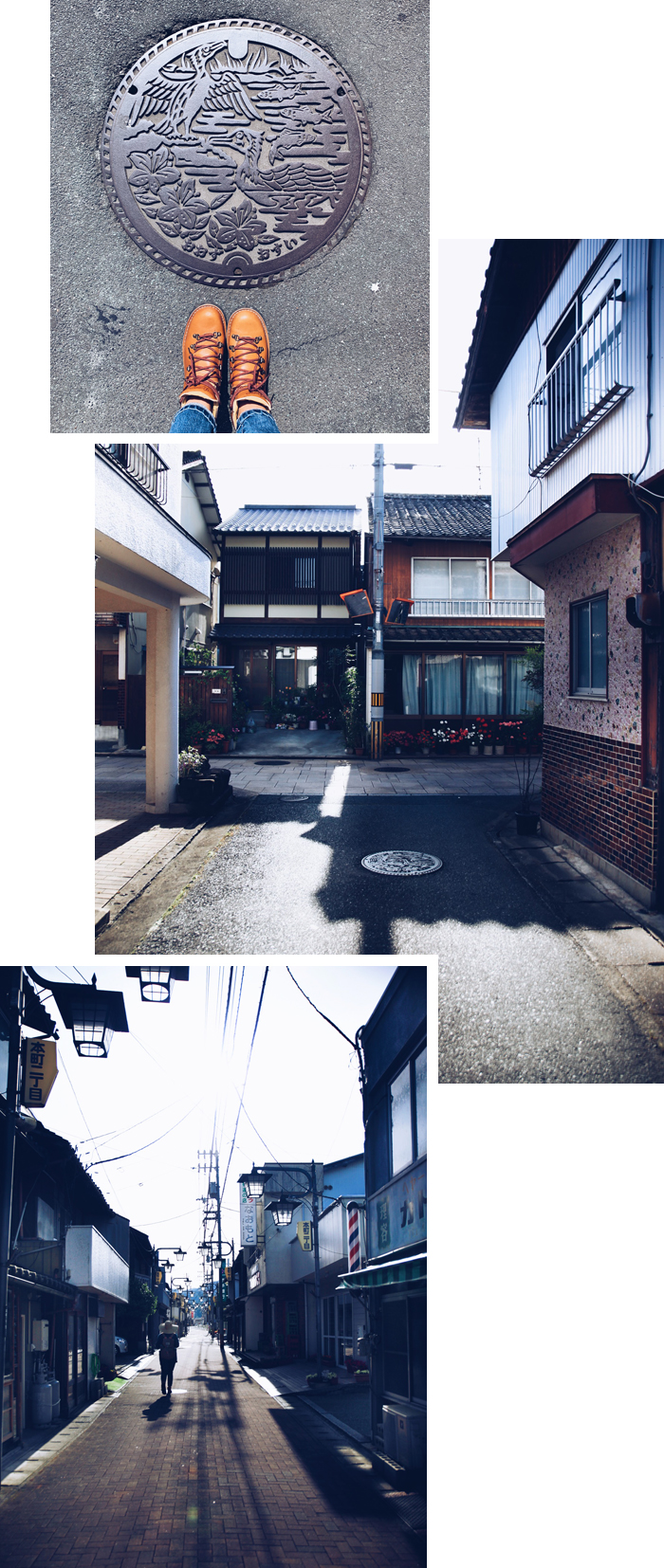
The city of Ōzu is nicknamed “Little Kyoto“, which already gives you a glimpse of its historical profile. Traditional alleys and remarkable monuments did not make us regret this escapade and you will understand while reading this article!
Hike in Shirataki Park
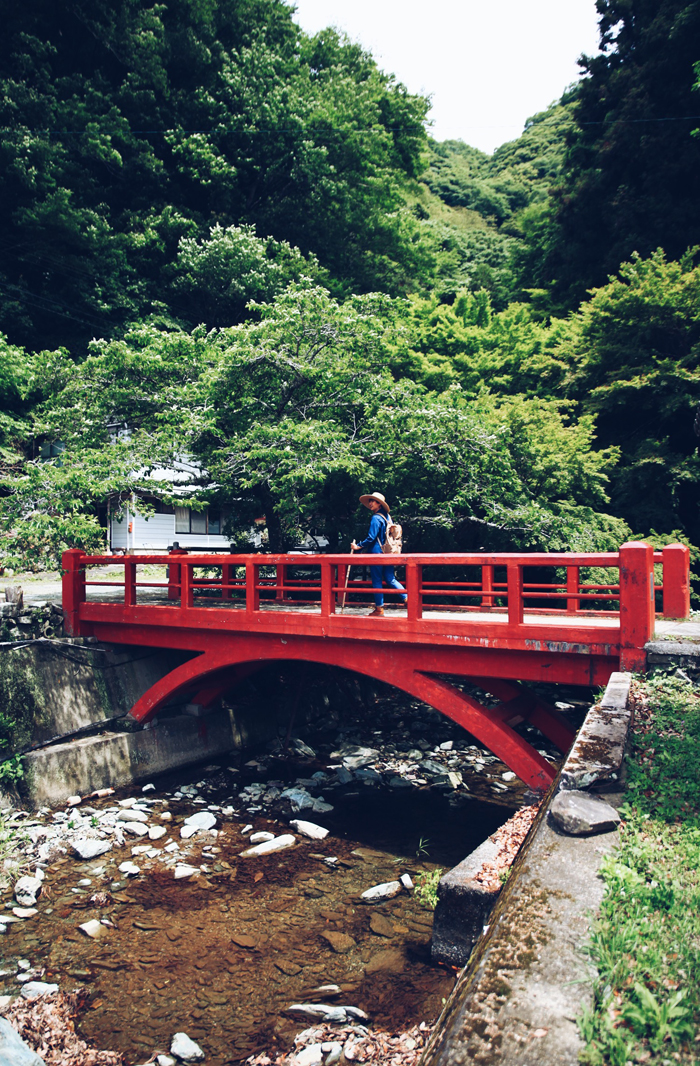
As soon as we arrived in the city, once the car was parked, we headed towards this completely deserted path.
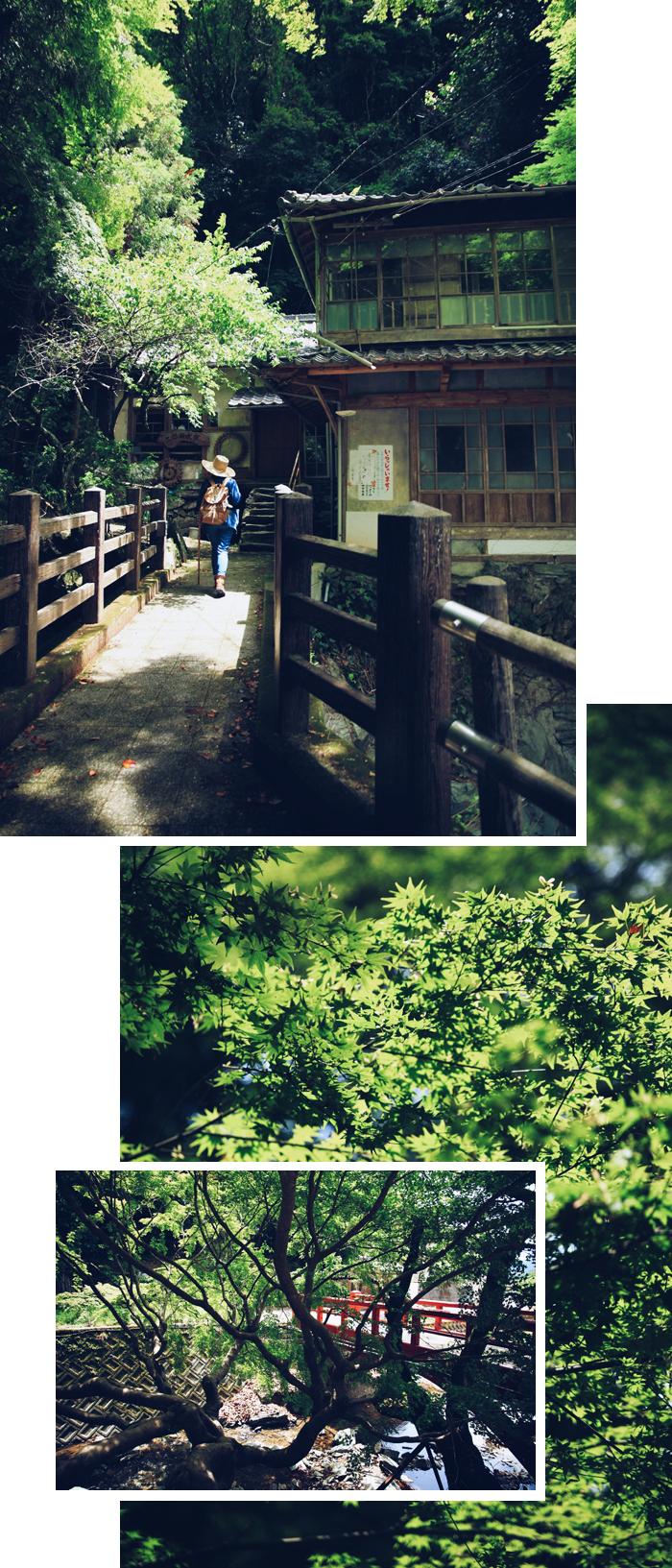
The red Japanese bridge spanning the Hiji River and the sign indicating the route imply that it would be even better to go there in autumn. I let you imagine the same scenery tinged with flaming leaves.
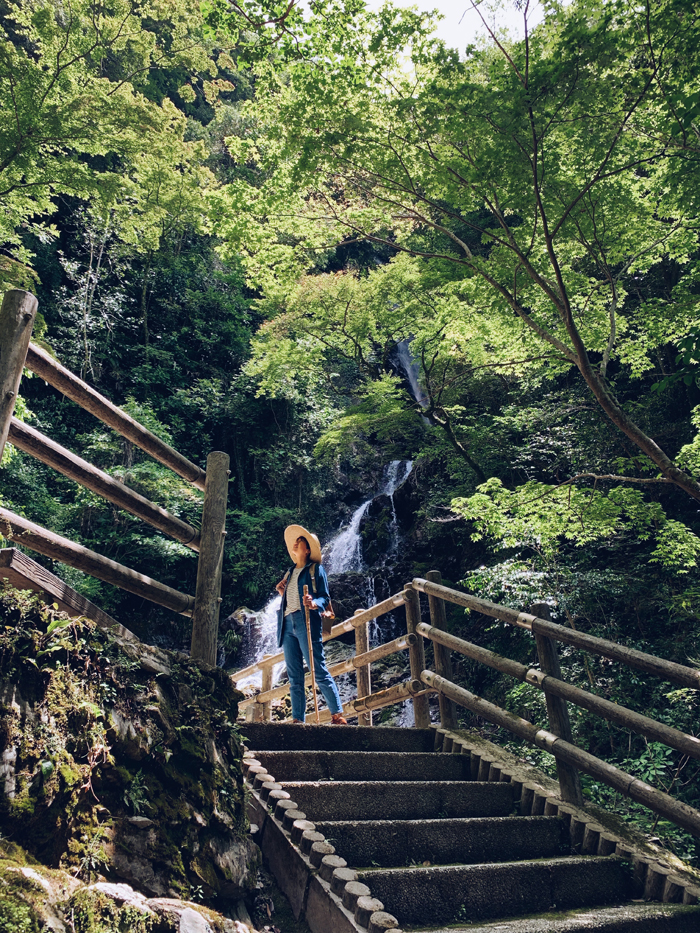
In the meantime, these pictures taken at the end of May reveal the summer side of the place. It was so pleasant to walk on this shady path, discovering a waterfall, then traditional statuettes hidden in the moss: the “yume warabe (夢わらべ)“.
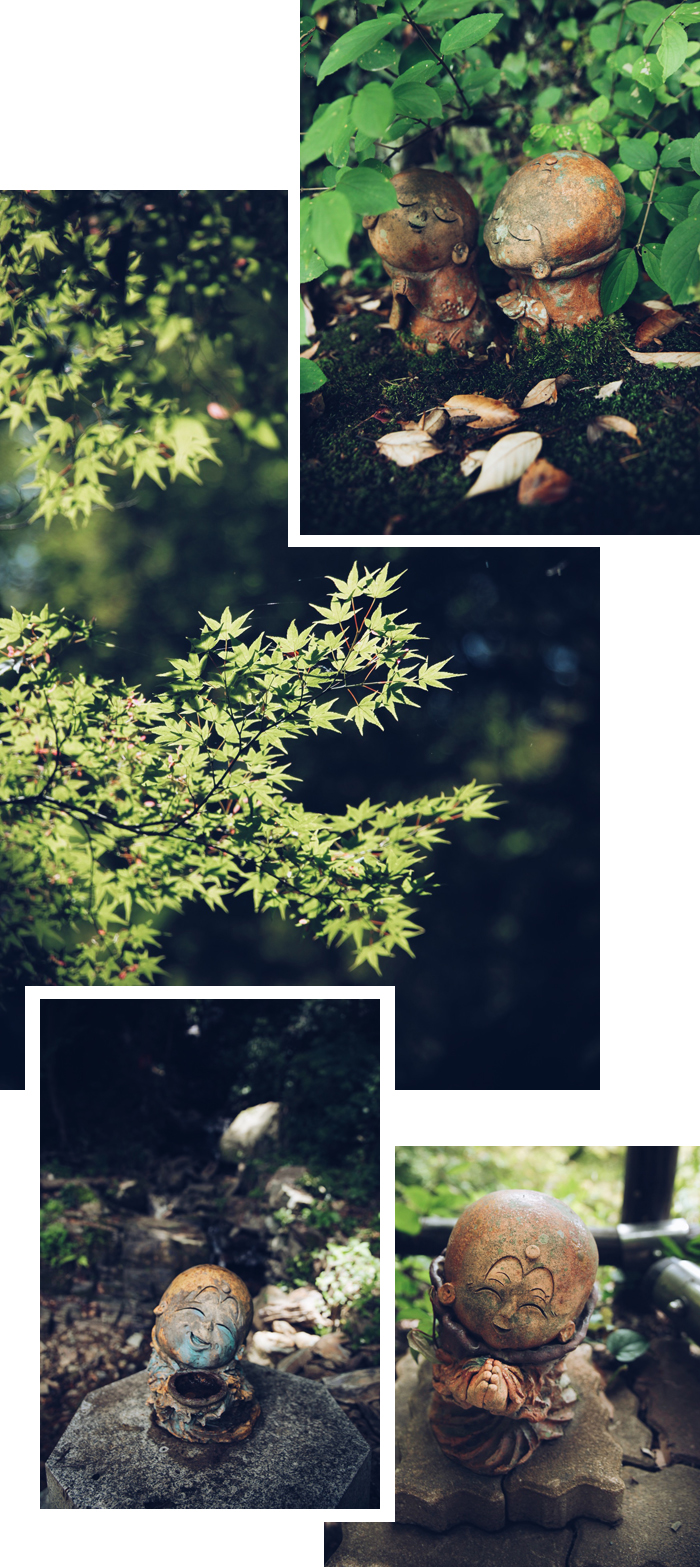
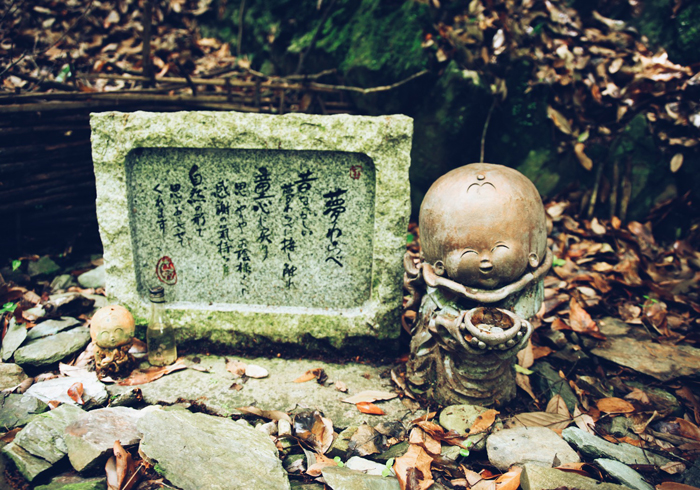
“Yume warabe” statuettes on our path
These jovial looking statues are supposed to make the person who looks at them regain the soul of a child and, in a way, encourage the walker in his ascent.
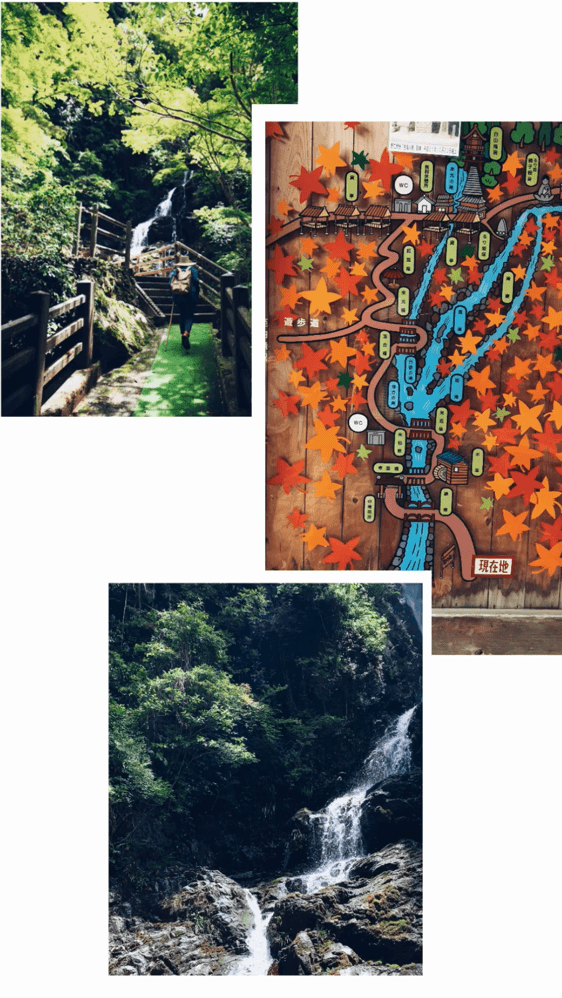
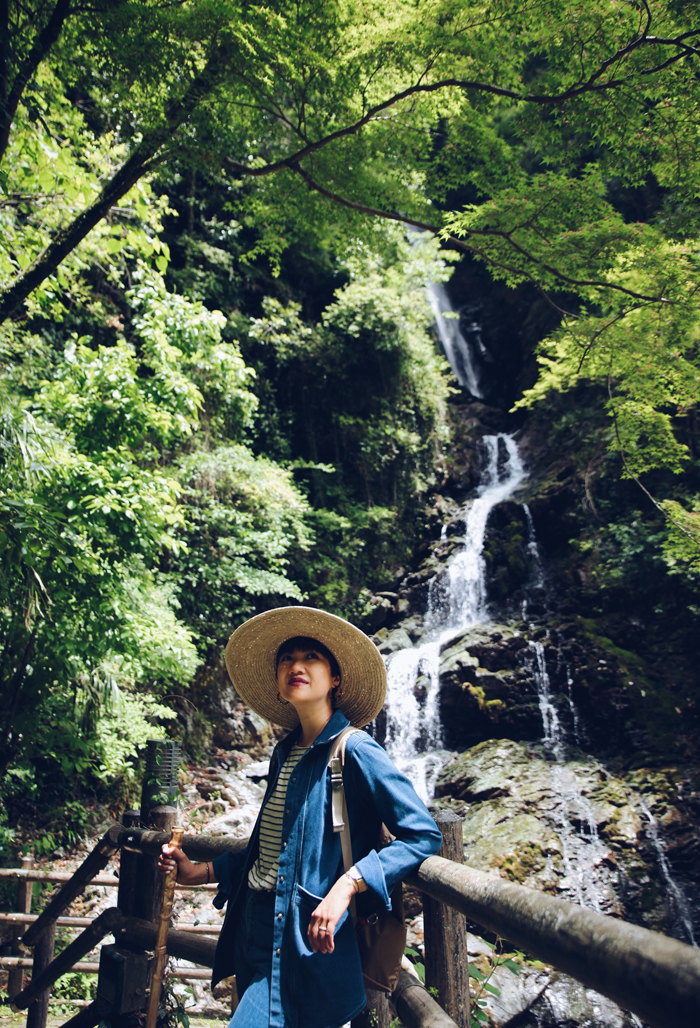
Even if the path is admirably well maintained (impeccable cobblestones and hiking poles graciously provided = Welcome to Japan), it’s steep!
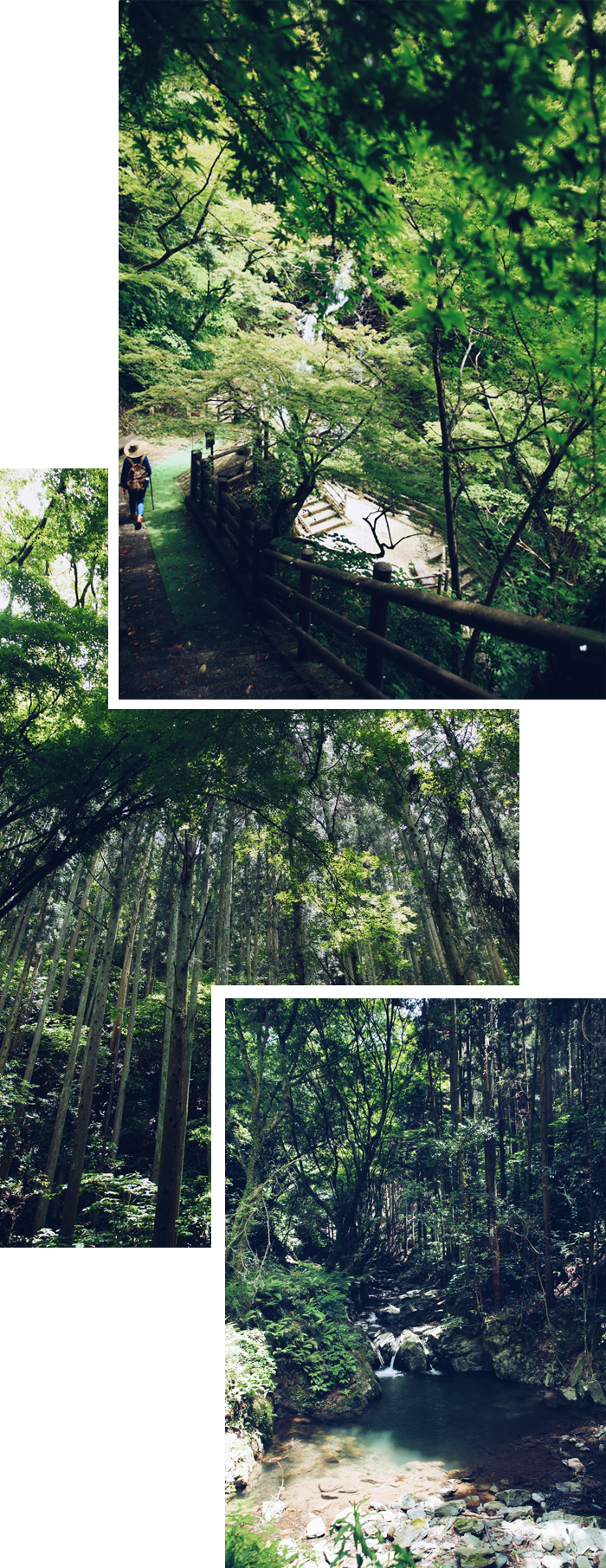
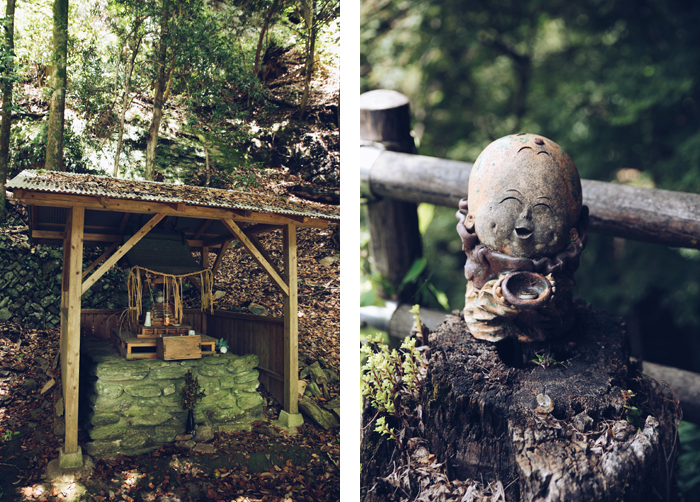
At the very top, we can cross some altars and mini-temples to meditate: Spirituality is deserved given the steepness of the stairs to get there… but the reward is at the top with a nice view of the village.
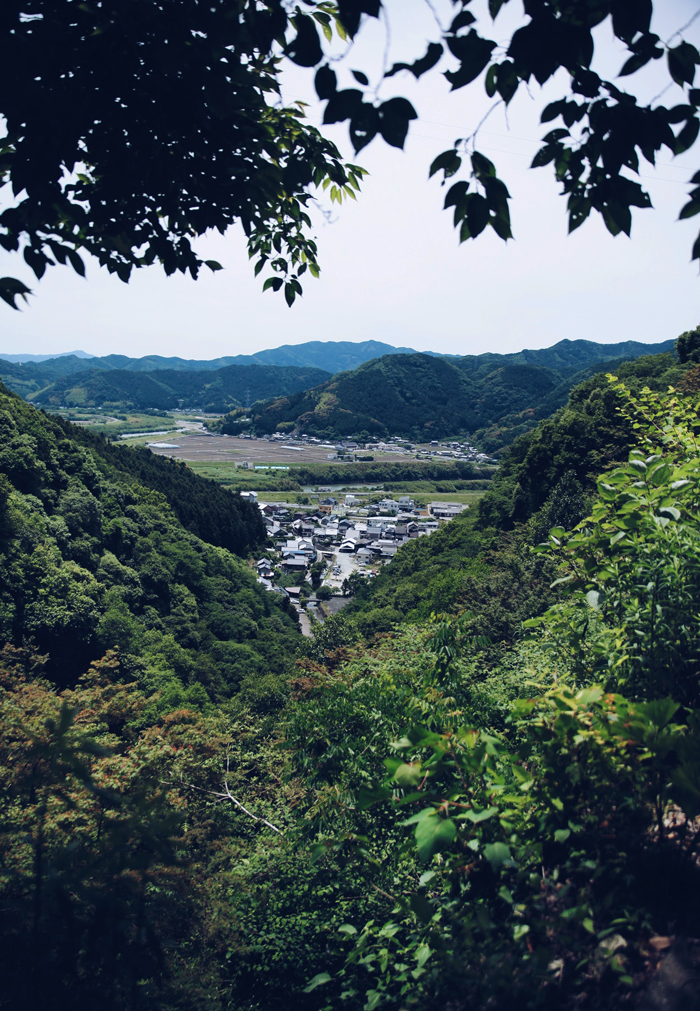
Pokopen Yochoko
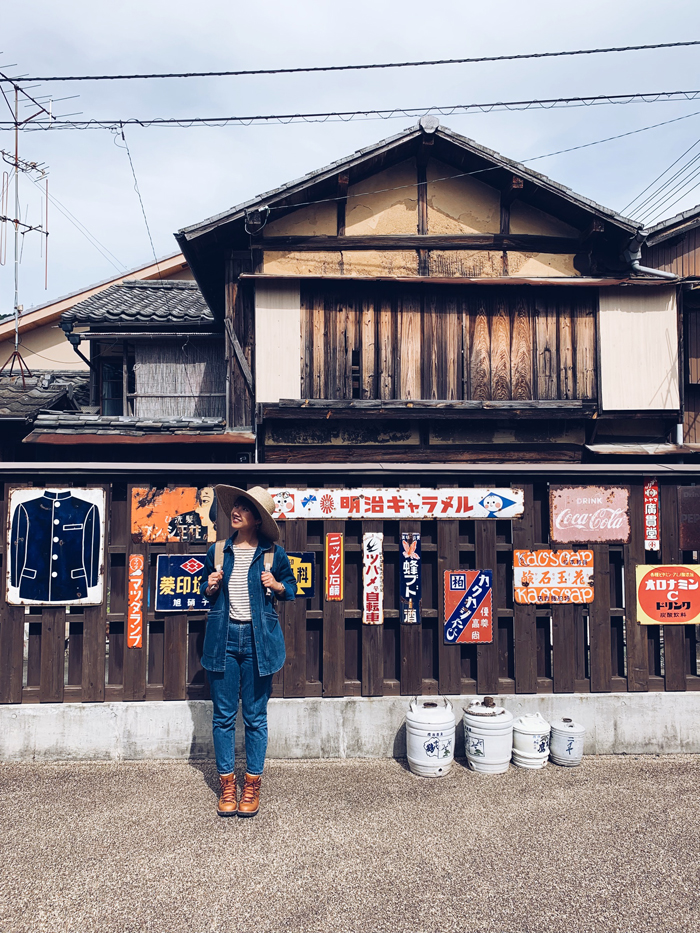
Back to civilization (or almost, since the village of Ōzu was particularly empty), we wandered through the alleys looking for an open restaurant, which was not easy (I will list some addresses at the end of the article).
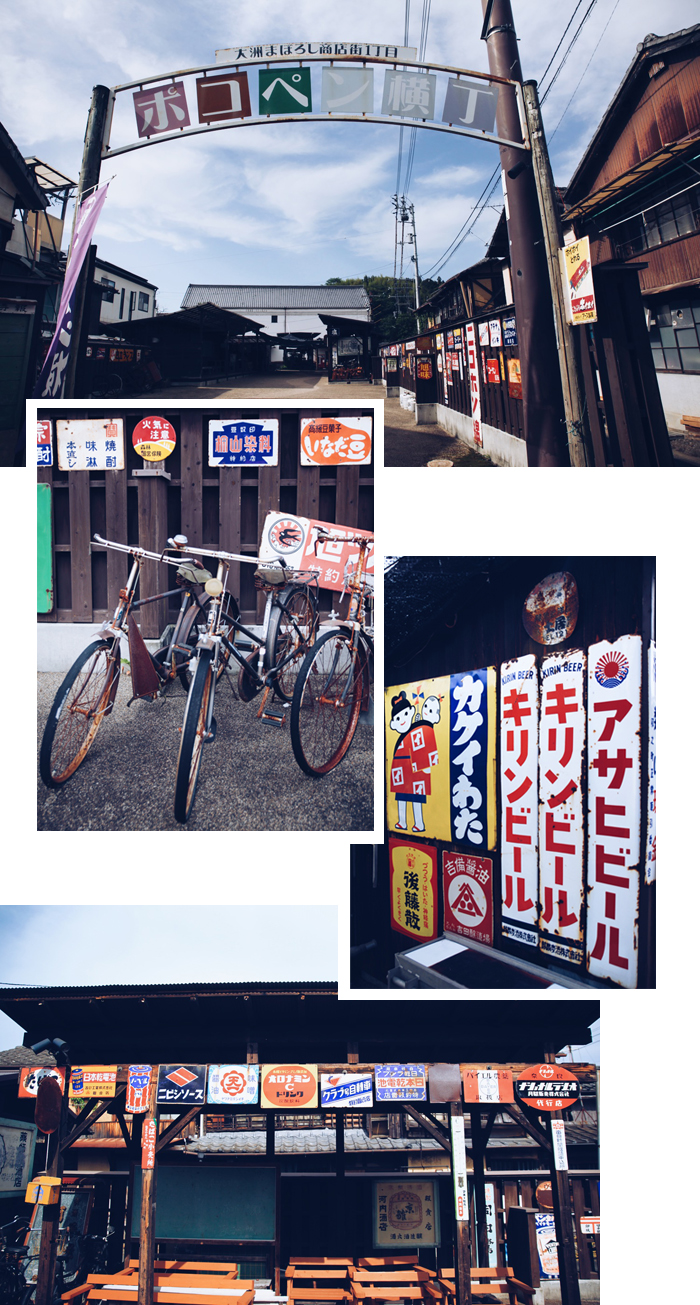
During our stroll in this almost ghost town, we stopped at Pokopen Yochoko square, for a return to the 60s. It was quite confusing to wander in this fairground, without the laughter of children, the crowd and the animation.
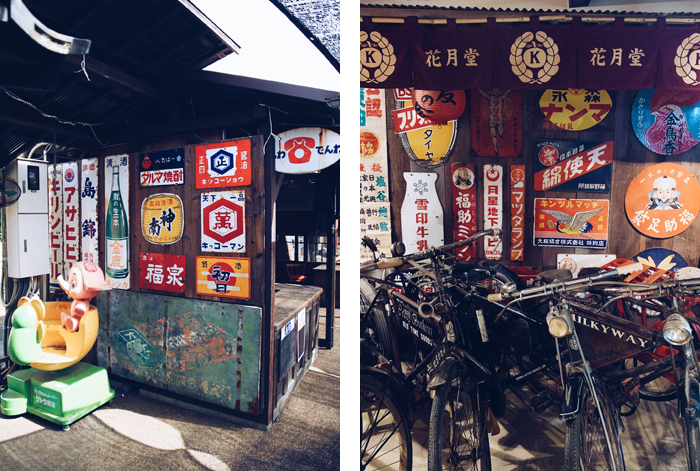
Creepy? A little… but it makes you want to go back there on a Sunday because it must be more animated that day since they open these retro booths, as in the old days (=every Sunday from April to November and every 3rd Sunday from December to March: you’ve been warned!)
We still had the chance to visit this museum called “Coke & Van goods museum”. If you are interested in the Japanese pop culture of the 60s and 70s and you have a cult for vintage objects, this place is for you.
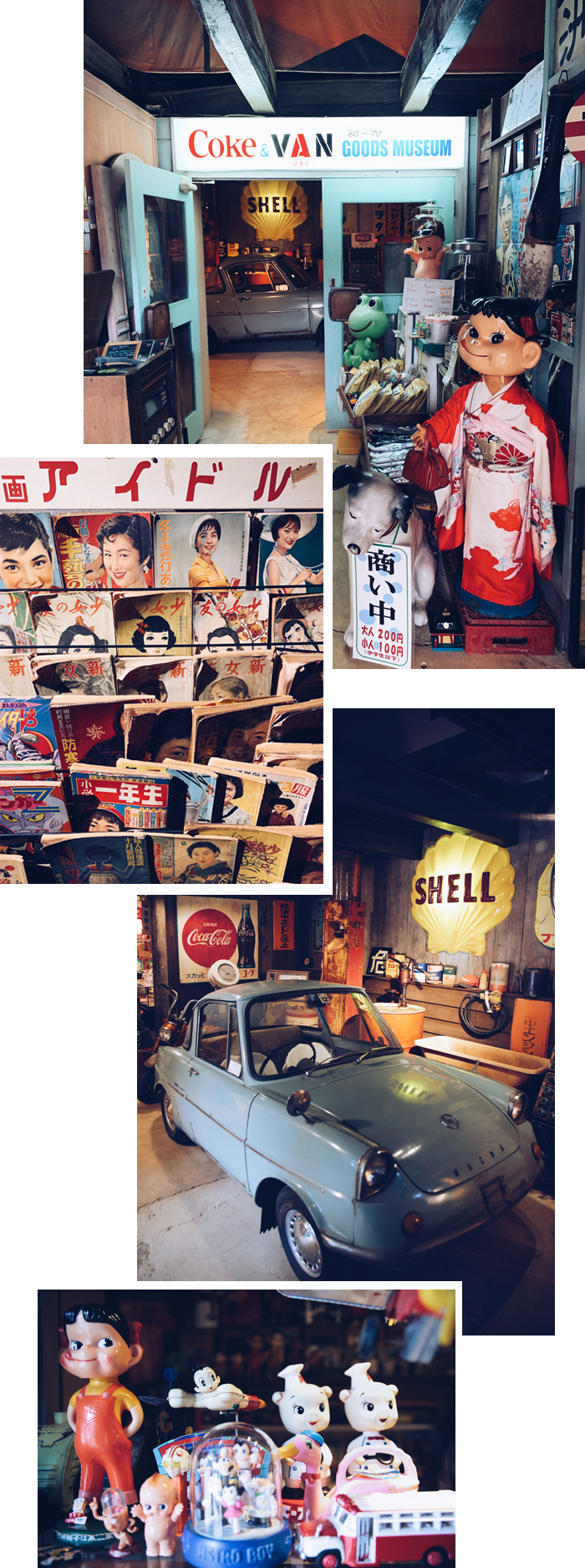
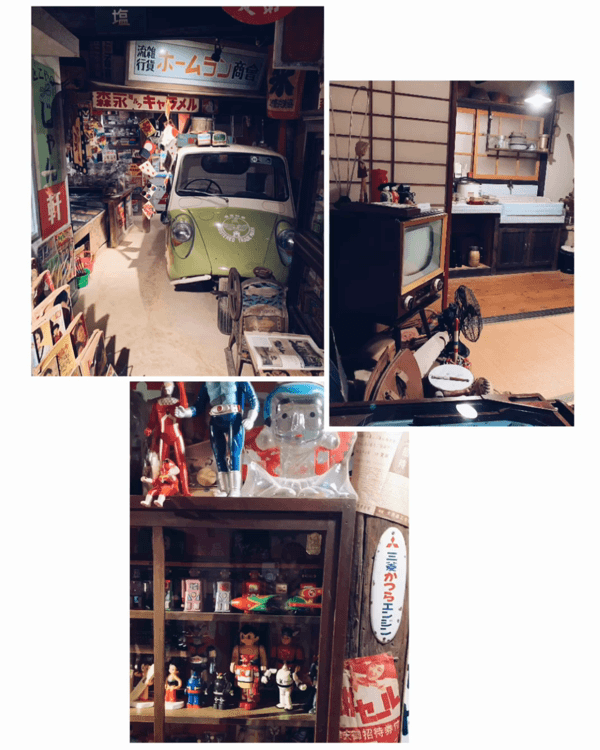
This Ali Baba’s cave is filled with anime figurines (Goldorak and Astro boy!) as well as an astronomical collection of Coca-Cola merchandise.
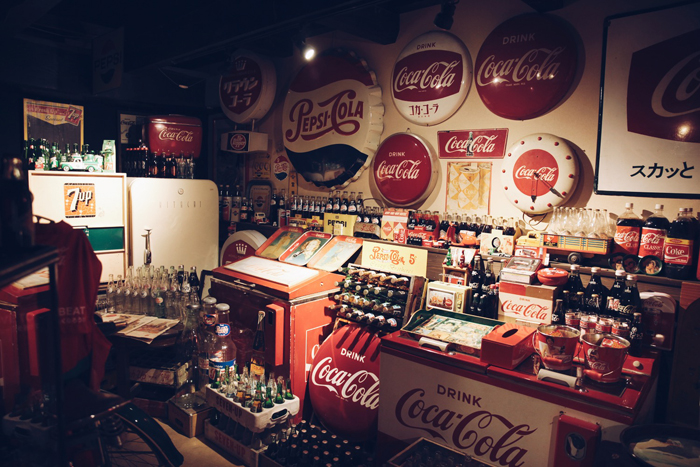
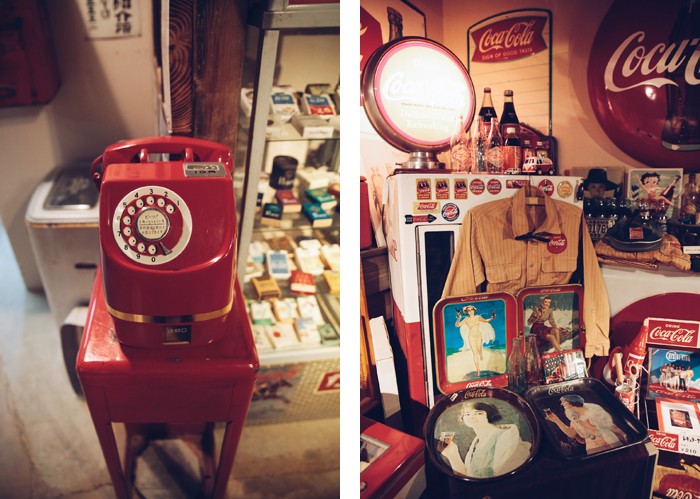
A traditional Japanese dwelling from the 60s has even been reconstructed to recreate this vintage atmosphere. A real time travel.
Ōzu castle
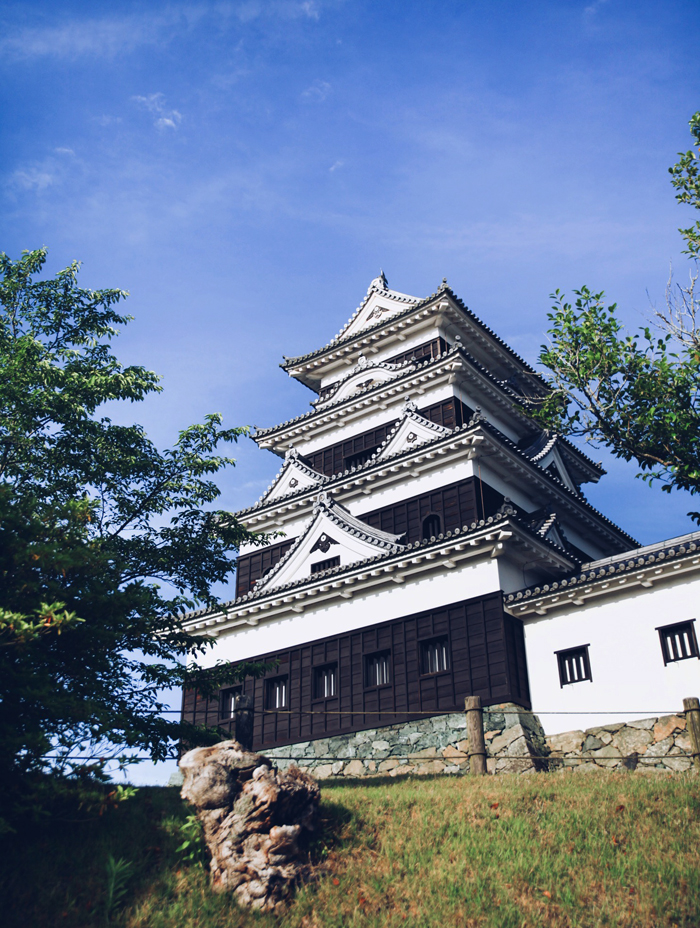
This castle is older than the one at Kōchi since it was built in the 14th century. It also overlooks the city. I just have this picture to show you knowing that we didn’t arrive in time for a visit of the inside nor of the dungeon (the view from above could have been nice).
Garyu Sanso
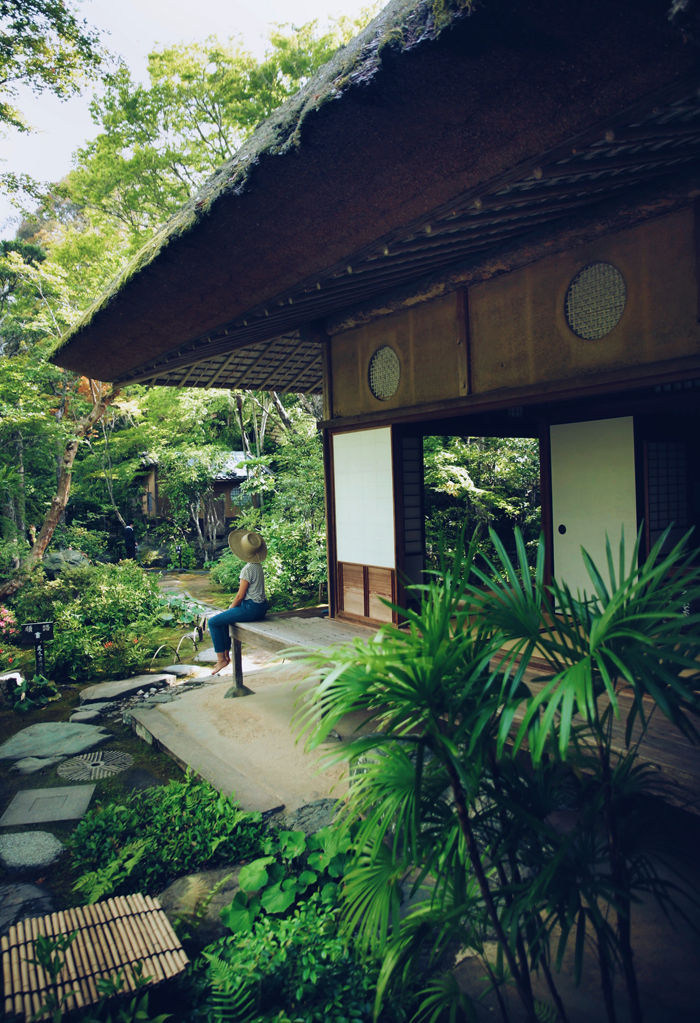
Visiting this house was like a dream and zen. Garyu means “sleeping dragon”… not so zen!
In the past, this house was used as a place of contemplation and stroll for the Shogun but quickly fell into ruin and was then restored from 1897 to 1907 by a rich merchant, Torajiro Kochi, an aesthete in his spare time.
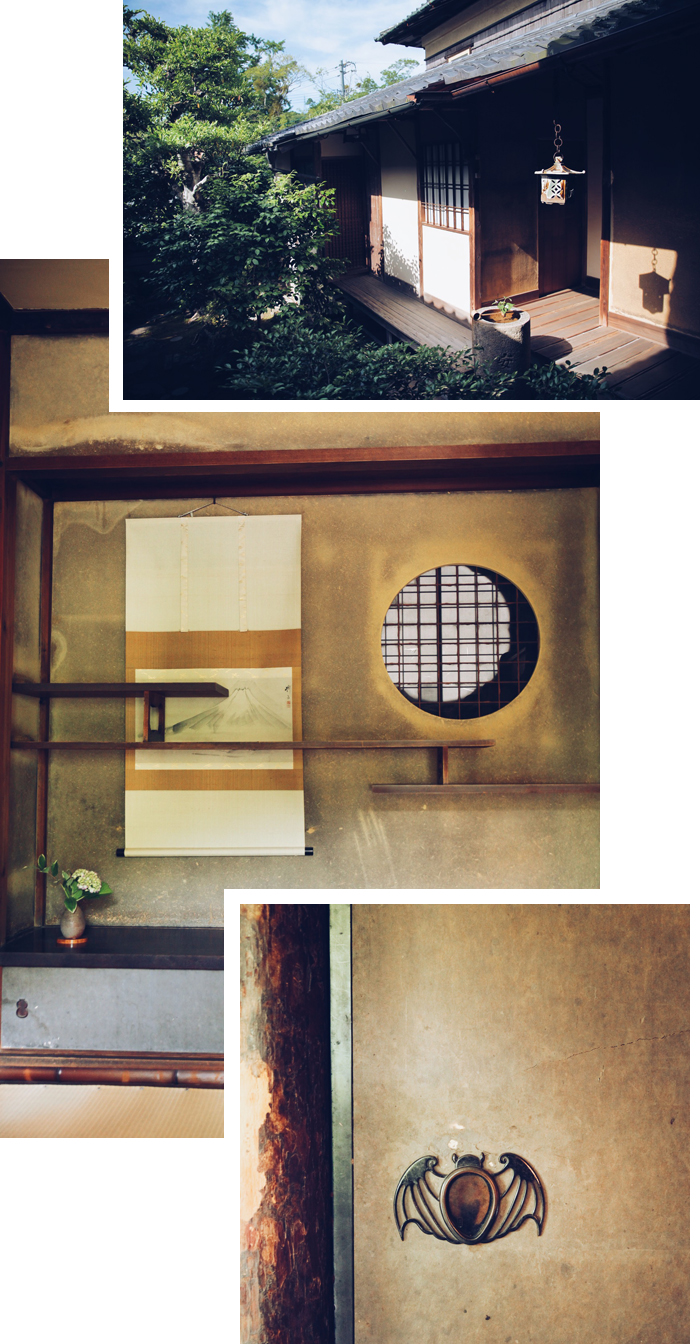
Thankfully he decided to spend his money in the reconstruction of this house! Beauty comes in the smallest detail, whether it is in the garden, the door handles that would please Batman or this round window with the light coming through, supposedly representing the moon.
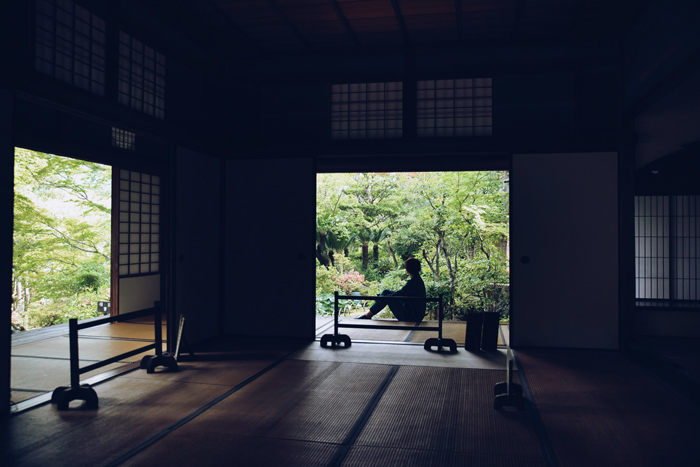
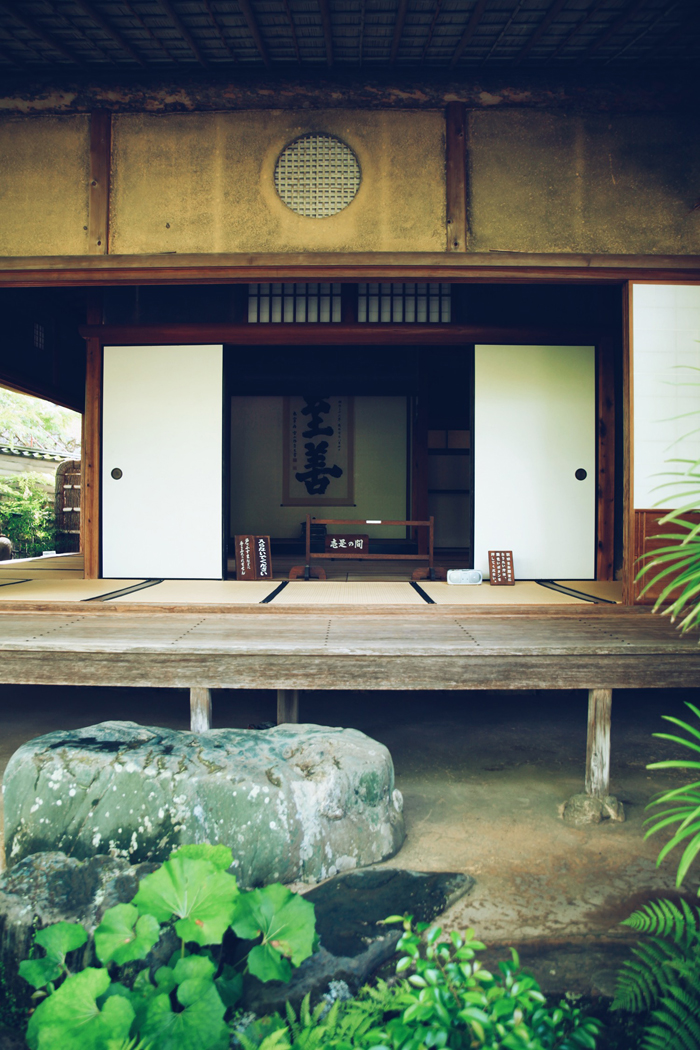
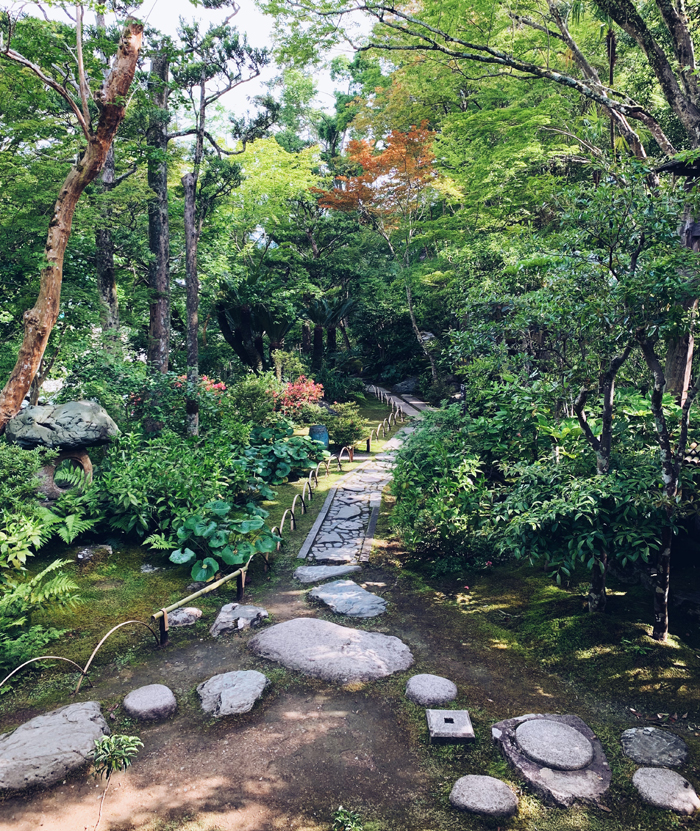
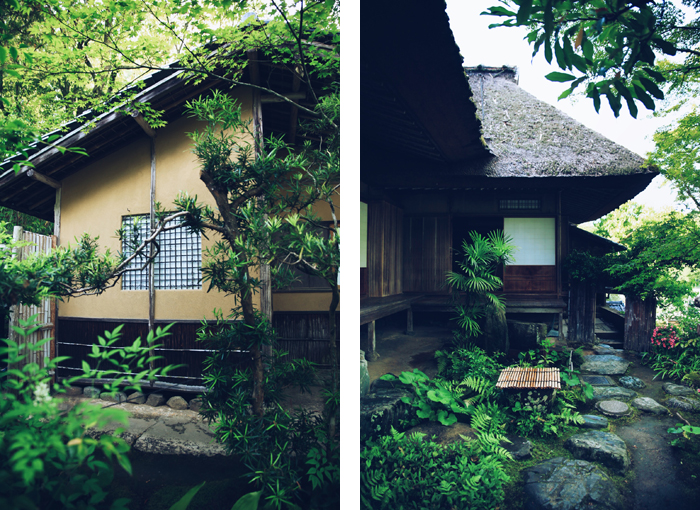
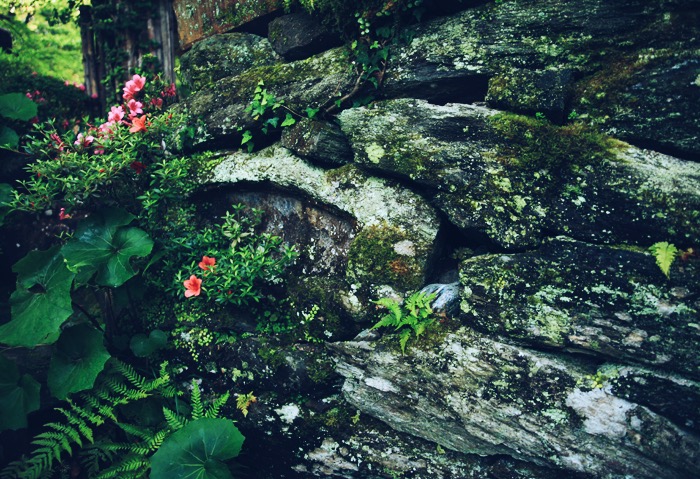
And final blow with this “Furo-an” tea pavilion overlooking the river, with its pontoon looking like a boat. We liked this place so much that we chose to post a picture of it in our living room, to feel like we were there every day.
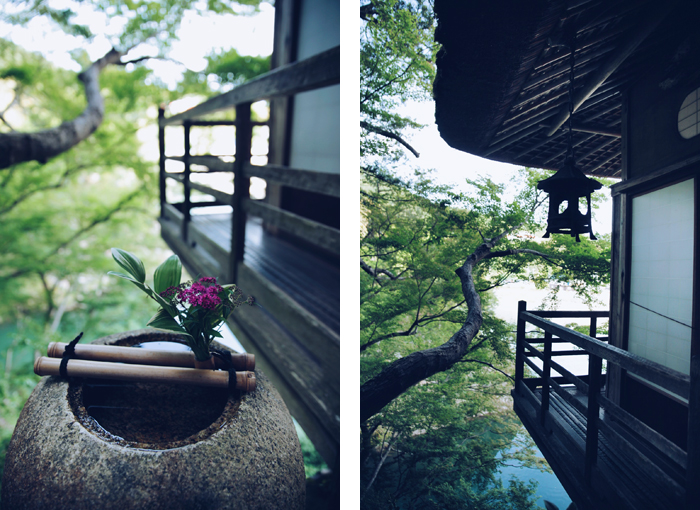
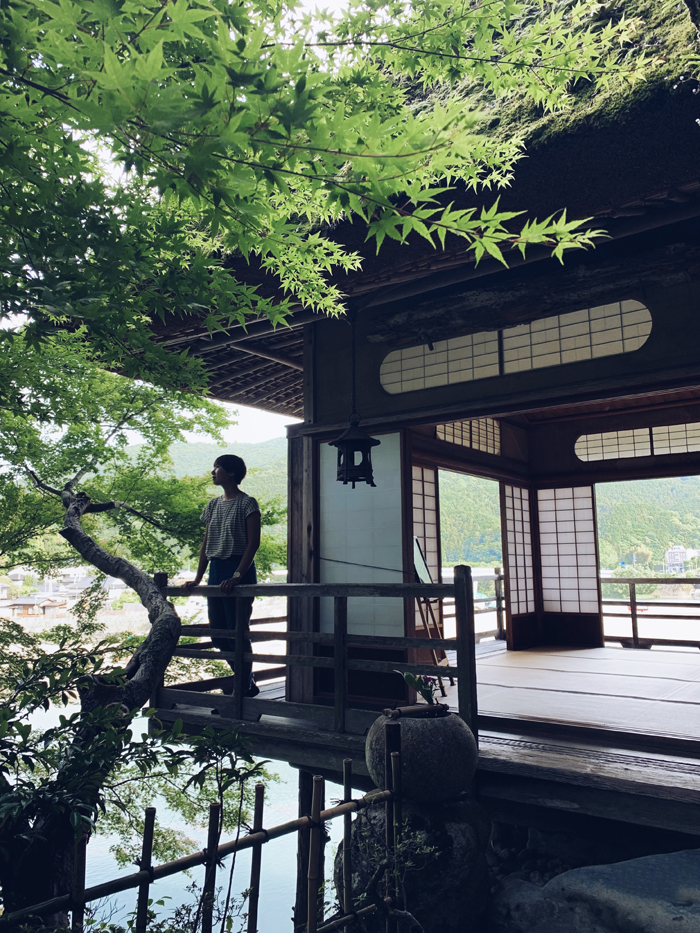
Stores and restaurants
During our period of visit we did not meet any tourists and hardly any inhabitants. In spite of this low affluence, we found some addresses where we could eat and bring back souvenirs.
TOKOTOKO Tearoom : The only address open for lunch that day (it was about 2pm, that explains it).
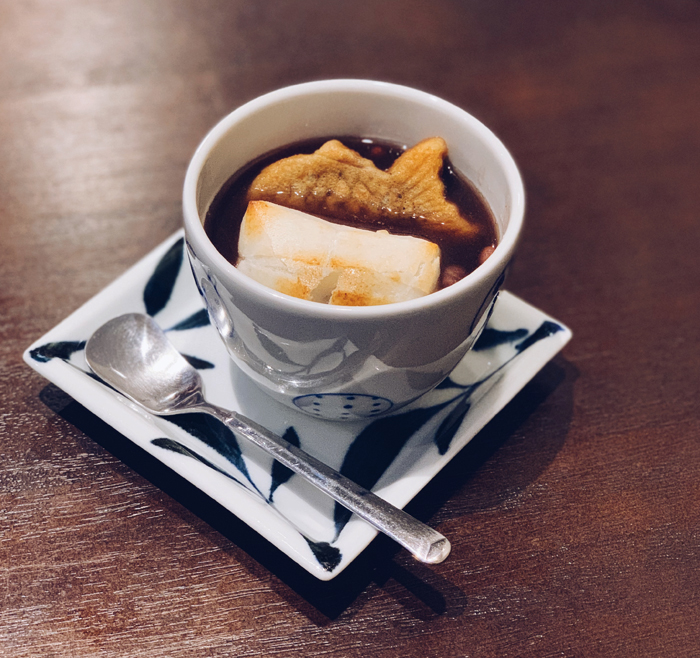
Zenzai
They mainly serve coffee, tea and sweets but we managed to find a delicious “Cheese on toast“: toasted bread with cheese that served as lunch and as dessert, the “zenzai”: a sweet red bean soup usually served with mochi but here, with a sticky rice cake and a dorayaki (Japanese waffle). We still remember how delicious it was!
RARIRURERO Restaurant :This restaurant next to the castle was also a source of delights and a change of scenery.
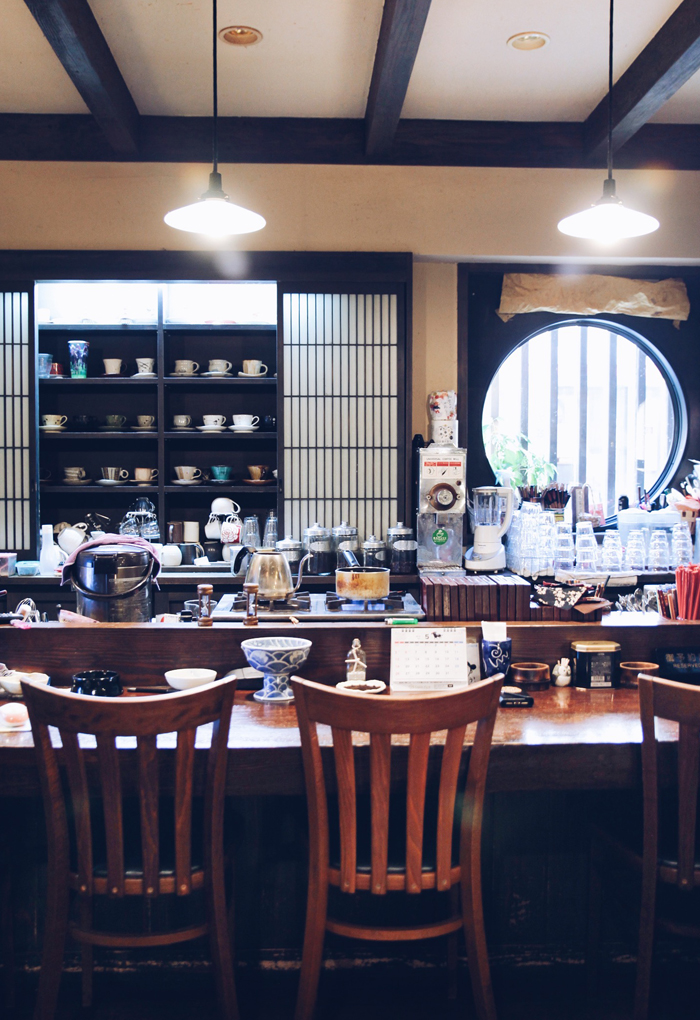
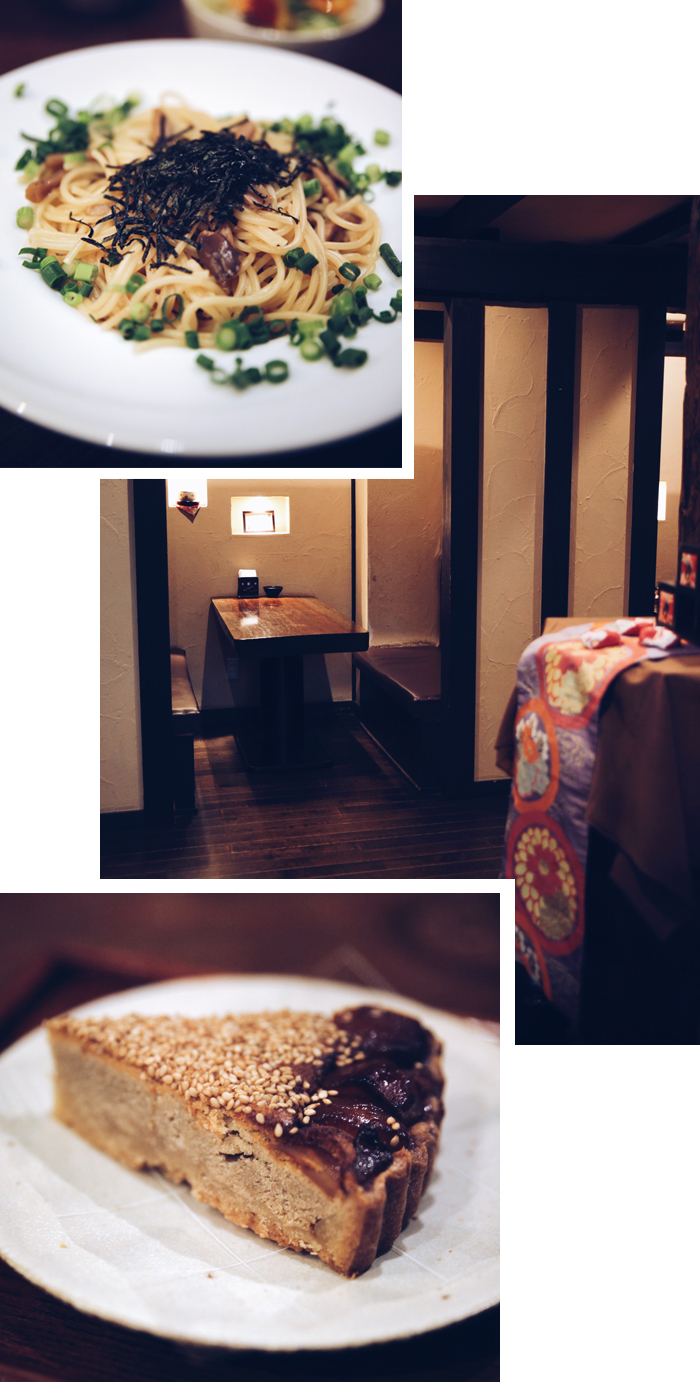
We discussed (a very big word considering the language barrier!) with the owner, who was also part of a team of traditional Yosakoi dancers (=the dance of Kōchi) considering the numerous photos and trophies which decorate the establishment.
She was happy to introduce her discipline to two French tourists… so I would like to pay her a tribute with this article!
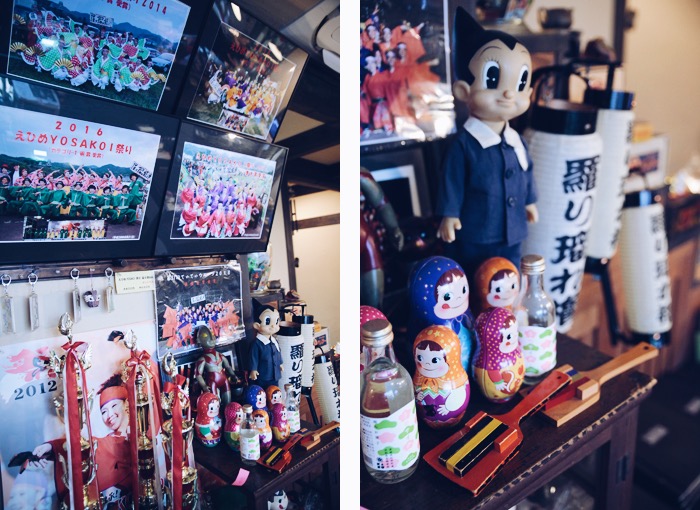
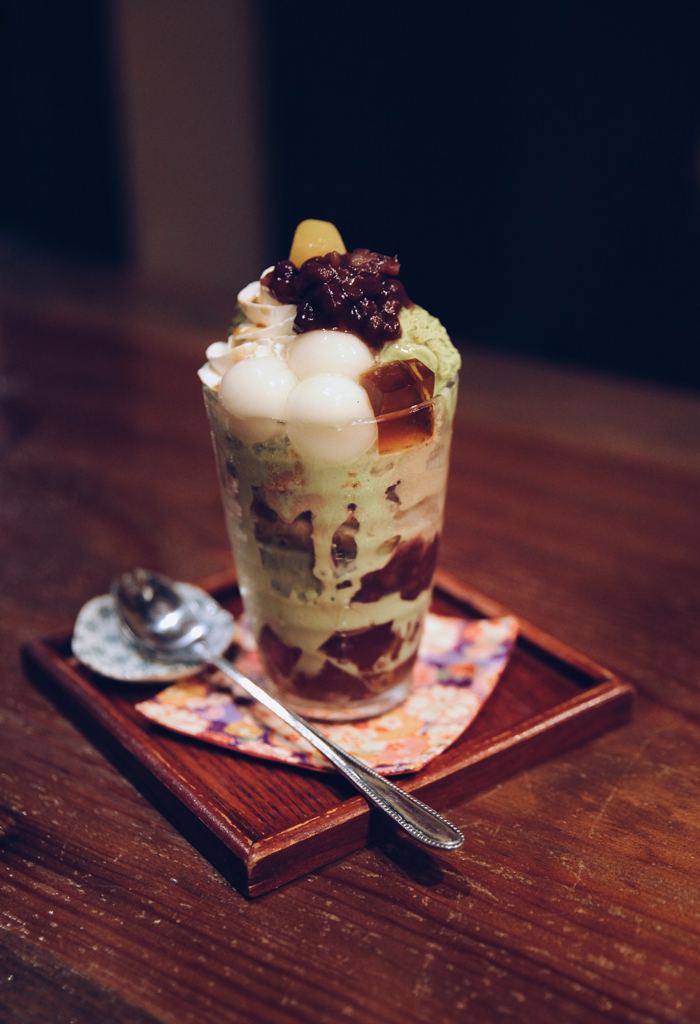
Mmmmmmh ! A Parfait !
The menu was entirely written in Japanese, so we picked a little bit at random by relying on the pictures: spaghetti with mushrooms, stew with melting cheese, Parfait and fruit tart, sesame seeds for dessert. Copious and once again a delight!
HANANOHITONOHIBI : This dried flower store was a pure marvel: we bought this dried branch of ??? (if anyone knows the name of the plant I am interested) and a small glass bottle.
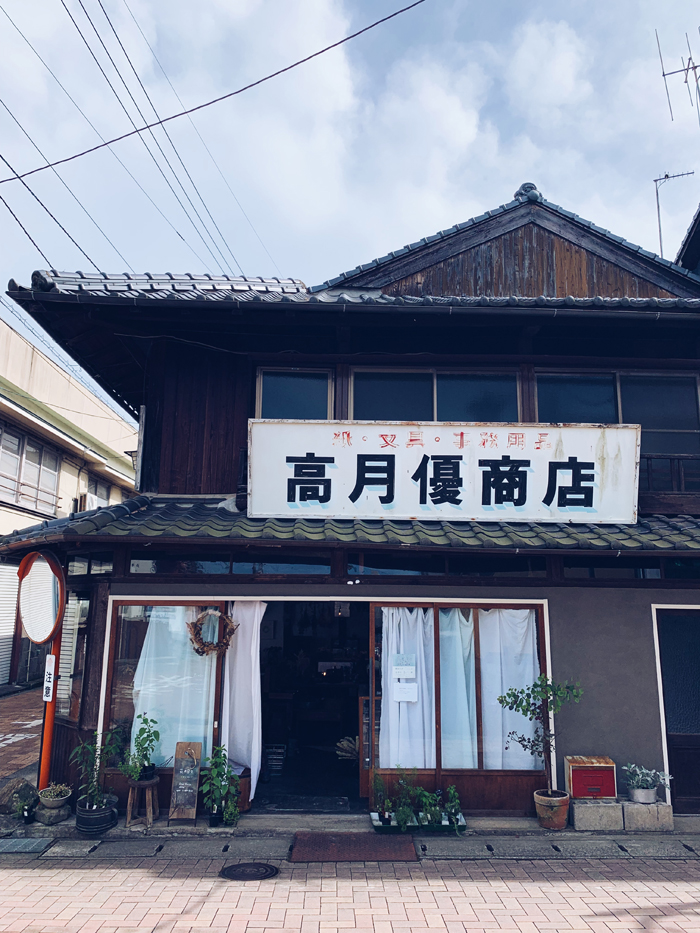
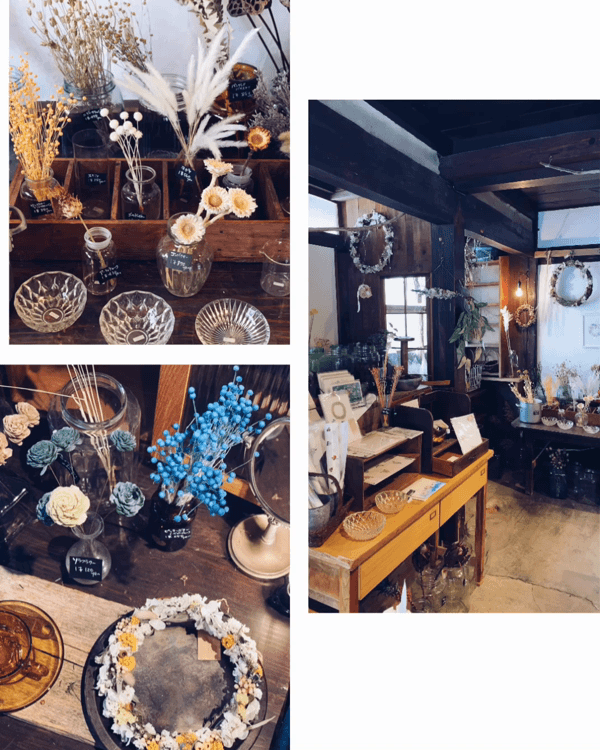
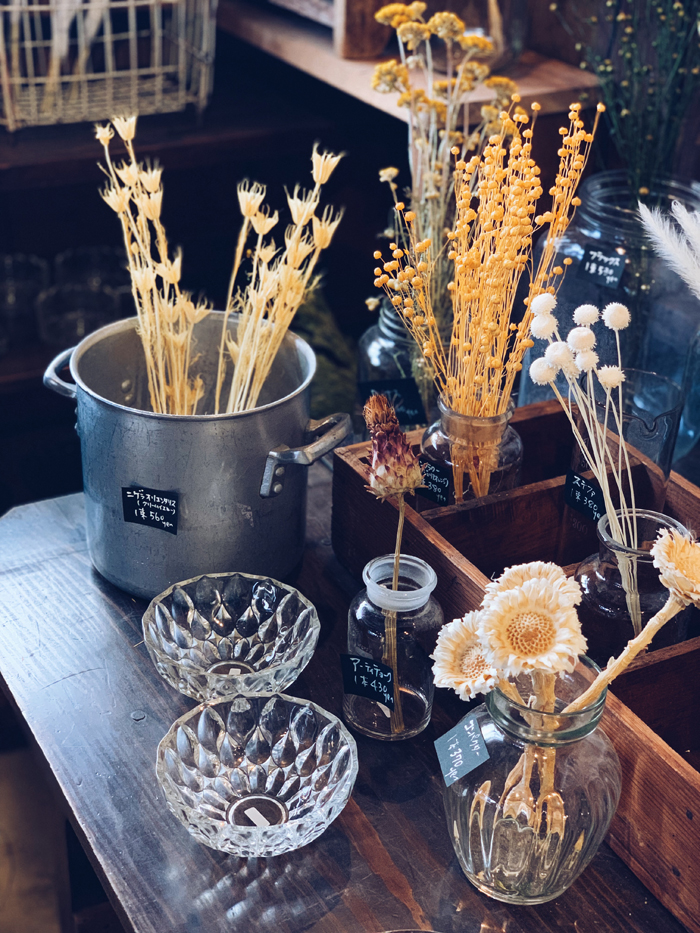
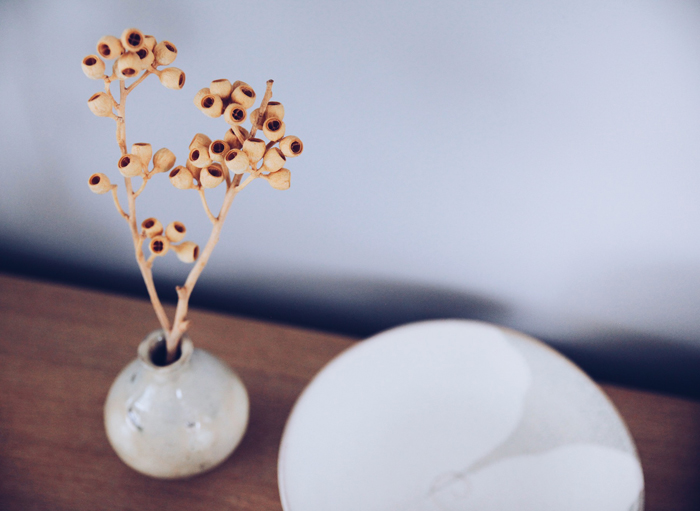
My little souvenir from this shop
If you are a fan of a refined and country atmosphere, this delicate store should be a must for you. Here is the instagram account of the store, for the pleasure of the eyes.
Other points of interest
Here are a few other ideas to visit, if you are lucky enough to stay around for a longer period of time:
INARIYAMA PARK : In November, a festival takes place in this park in the middle of the blushing maple trees.
TOMISUYAMA PARK :To be admired more in spring, when the rhododendrons are in bloom; in shades of pink and fuchsia.
LE PONT MIYUKI : A roofed wooden bridge built in 1773 over which the hero of Kōchi, Sakamoto Ryoma (I showed you his statue on Katsurahama beach) crossed.
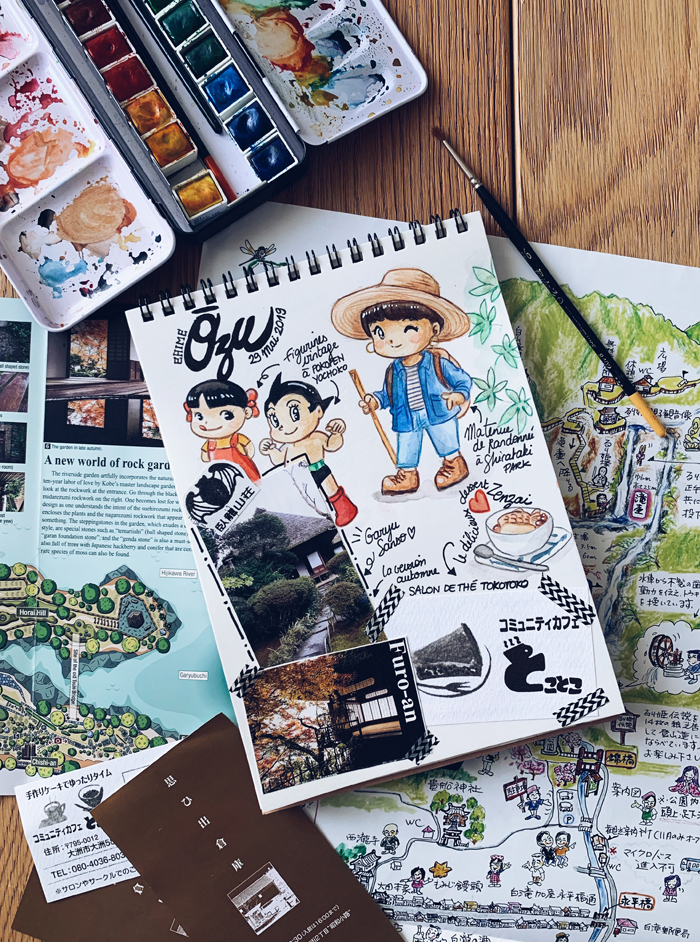
I hope that this visit of Ōzu pleased you and made you travel.
The next step will be even different as we return to Kōchi Prefecture for a night in the mountains at Otoyocho, Nagafuchi, in a 100 year old house transformed into a guesthouse where the sweetness of life and the notion of “Slow life” take all their meaning. Slow down a little bit… and see you soon! (English translation by Quiterie)

14 Comments
Charlotte
La maison et le jardin sont magnifiques!
J’ai tellement envie de retourner au Japon, et tes articles ne font amplifier cette envie 🙂
Tokyobanhbao
Ohh oui cette maison était divine avec la beauté dans tous les coins ! J’espère qu’on pourra retourner au Japon le plus vite possible !
Annie
J’adore ce road trip au compte goutte !!! merci du partage 🙂
D’ailleurs, comment tu t’y retrouves dans tout ce que tu as fait alors que c’était il y a longtemps ? Tu as pris des notes, tu as tout classé ?
Tokyobanhbao
Merci ! Je suis contente que ça te plaise ! Alors en effet c’est assez difficile de me replonger dans tous ces détails un an et demi après mais les photos aident à me souvenir et pour les adresses j’ai gardé des cartes de visites ou des captures google des lieux donc ça aide ! Pour le reste j’essaye de me documenter par divers moyens et sinon, je crois avoir une bonne mémoire (c’était un voyage vraiment inoubliable !!)
polochon
Encore un très beau carnet de voyage, merci pour le partage.
Tokyobanhbao
Très contente que cela te plaise ! Merci !
L&T
Quel plaisir de retrouver tes articles sur le Japon à chaque fois ! Cela me fait voyager…
Le château d’Ozu a l’air impressionnant et la maison “GARYU SANSO” et son jardin sont magnifiques!
Tokyobanhbao
J’en suis ravie merci ! C’était merveilleux et je mesure ma chance d’avoir pu voir cela de mes propres yeux en vrai ! Contente de t’avoir transmis un peu de ce que j’ai vu ce jour-là <3
Aude
Comme d’habitude tu arrives à nous transporter directement au Japon grâce à ton récit et tes jolies photos. Contente de savoir qu’un autre article suivra !
Tokyobanhbao
Non ce n’est pas fini ! Il me reste des choses à vous raconter ! ^^ Merci de voyager en ma compagnie en tous cas !
Dandrigabi
Je n’avais pas encore eu le temps de lire cet article, mais quel plaisir ! Les photos sont sublimes et les lieux font tellement rêver. Je note toutes ces précieuses adresses (en particulier celle du fameux zenzai omg) en attendant la réouverture des frontières !
Tokyobanhbao
Ravie que tu aies pris le temps de lire ! Le zenzai et le parfait étaient vraiment mémorable donc j’espère que tu auras l’occasion d’y aller un jour !
Carine Missous
Merci, merci pour cette nouvelle étape, ces belles photos, j’y étais! Merci!
Tokyobanhbao
Ravie de t’avoir fait voyager ! Merci à toi !